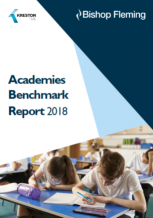With more than 200 members in our Academy team, we've got the capacity and expertise to meet your needs.
Are you using the new School Workforce Planning tools?
28th September 2018
The Department for Education have released a guidance document on school workforce planning which will assist schools and academy trusts on reviewing staff workforce structures and so the senior leadership teams can work towards improving them. However, there isn’t one staff structure that is suited to all schools, each school will have a different staffing structure which is optimum to them and would be tailored due to contextual factors such as funding and pupil demographics of the school.
Schools should review their staff structures over the medium term (3-5 years) to see if it is as effective and efficient as it could be. The review process should be completed in tandem with the curriculum and school development planning. This is vital as the cost of staffing is, on average, approximately 75% of the total expenditure a school. The reviews that the schools produce will include considerations such as:
- how to maximise the potential of current staff;
- how to optimise the balance of full time and part time staff;
- how the medium-term needs of the school can be worked towards and what assumptions are necessary for creating these medium-term needs;
- and how the need for redundancies can be reduced to a minimum and the workload of the staff and their morale.
School leadership teams can improve their review process and work towards optimising their workforce by considering the objectives of the school and analysing the staffing roles to ensure that they are appropriate to meet these objectives. An example of this would be examining roles and deciphering whether they could be merged or if it is a good balance of staff. Regulations require that schools have specialist subject teachers, so the review must ensure they meet the curriculum standards. The Department for Education have benchmarks which allows schools to compare finances and promote discussion between them on how to improve their finances. Key benchmarking data on staffing includes total spending on staff, breakdown on spending and drivers of staffing costs.
Another point to consider is whether teaching staff are being deployed in the most effective and efficient way possible. If the leadership team use the curriculum to determine what the priorities are and aim to achieve these, they can allocate the staff appropriately to be more efficient and effective. Reducing costs will be critical to the school, and a potential way to do this is to explore opportunities to collaborate with other schools to negotiate down agency fees for supply teachers, without reducing their pay.
Another point to consider for schools undertaking the review process is making sure the correct appraisal policies are in place. The review process should compare the objectives of the teachers to validate they are all working towards a common goal of improving the education of pupils. Are the teacher’s pay progression decisions based on performance? This can be compared to the school data on teachers receiving performance related progression payments each year.
The Department for Education has also released a curriculum staffing spreadsheet along with the guidance document on school workforce planning. The aim of this spreadsheet is to allow the school leadership team to have a summary sheet where they can see whether their school is over or under staffed to teach its curriculum. It can then be used as a tool in staff structure planning meetings.





